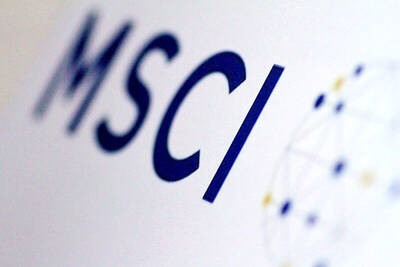The official manufacturing purchasing managers’ index (PMI) held surprisingly strong at 53.1 last month, as inventory demand bolstered suppliers of electronics and optical products, the Chung-Hua Institution for Economic Research (CIER, 中華經濟研究院) said yesterday.
However, firms were downbeat about business in the next six months, as the COVID-19 pandemic is spreading in Europe and the US, hurting demand for exports, the Taipei-based think tank said in a survey.
Last month’s PMI reading rose 0.4 percentage points from a month earlier, as firms in the electronics, transportation and biotechnology sectors reported an improvement in business, while those selling food products, machinery equipment and basic raw materials reported negative cyclical movements, it said.
PMI figures aim to gauge the health of the manufacturing industry with values above 50 suggesting an expansion and below indicating a contraction.
The PMI increase had a lot to do with the sub-index on delivery time, which rose to 65.9, as the coronavirus outbreak disrupted work in China and delayed shipment schedules, CIER vice president Wang Jiann-chyuan (王健全) said.
Supply chain disruptions loom larger as India, Malaysia, Mexico and many other countries are shutting down non-essential businesses to combat the disease, Wang said.
The reading for the six-month outlook plunged to 28.7, the worst since the launch of the PMI index in July 2012, Wang said.
Firms across all sectors shared a gloomy outlook, despite resilient PMI showings in the first quarter, CIER said.
The sub-indices on new business orders and export orders remained in positive territory, with readings of 50.1 and 51.2 respectively, it said.
The industrial production and employment sub-indices contracted to 49.5 and 49.2 respectively, as companies became concerned about raising headcounts, the survey said.
The non-manufacturing purchasing managers’ index rose from 40.4 a month earlier to 42.3, but remained in contraction territory, CIER said.
Restaurants and hotels have especially felt the pinch, as well as companies in the retail sales, logistics, warehouse and financial service sectors, the survey said.
Companies in the wholesale, education and construction sectors managed to post a modest increase, it said.
Although the government has introduced relief measures, recovery remains elusive for tourism-related industries, Wang said, adding that the gauge on service-oriented firms’ six-month business outlook tanked to a record low of 13.7.
Consumer spending might rebound once the number of confirmed COVID-19 cases plateaus, the economist said.

PERSISTENT RUMORS: Nvidia’s CEO said the firm is not in talks to sell AI chips to China, but he would welcome a change in US policy barring the activity Nvidia Corp CEO Jensen Huang (黃仁勳) said his company is not in discussions to sell its Blackwell artificial intelligence (AI) chips to Chinese firms, waving off speculation it is trying to engineer a return to the world’s largest semiconductor market. Huang, who arrived in Taiwan yesterday ahead of meetings with longtime partner Taiwan Semiconductor Manufacturing Co (TSMC, 台積電), took the opportunity to clarify recent comments about the US-China AI race. The Nvidia head caused a stir in an interview this week with the Financial Times, in which he was quoted as saying “China will win” the AI race. Huang yesterday said

Nissan Motor Co has agreed to sell its global headquarters in Yokohama for ¥97 billion (US$630 million) to a group sponsored by Taiwanese autoparts maker Minth Group (敏實集團), as the struggling automaker seeks to shore up its financial position. The acquisition is led by a special purchase company managed by KJR Management Ltd, a Japanese real-estate unit of private equity giant KKR & Co, people familiar with the matter said. KJR said it would act as asset manager together with Mizuho Real Estate Management Co. Nissan is undergoing a broad cost-cutting campaign by eliminating jobs and shuttering plants as it grapples

The Chinese government has issued guidance requiring new data center projects that have received any state funds to only use domestically made artificial intelligence (AI) chips, two sources familiar with the matter told Reuters. In recent weeks, Chinese regulatory authorities have ordered such data centers that are less than 30 percent complete to remove all installed foreign chips, or cancel plans to purchase them, while projects in a more advanced stage would be decided on a case-by-case basis, the sources said. The move could represent one of China’s most aggressive steps yet to eliminate foreign technology from its critical infrastructure amid a

MORE WEIGHT: The national weighting was raised in one index while holding steady in two others, while several companies rose or fell in prominence MSCI Inc, a global index provider, has raised Taiwan’s weighting in one of its major indices and left the country’s weighting unchanged in two other indices after a regular index review. In a statement released on Thursday, MSCI said it has upgraded Taiwan’s weighting in the MSCI All-Country World Index by 0.02 percentage points to 2.25 percent, while maintaining the weighting in the MSCI Emerging Markets Index, the most closely watched by foreign institutional investors, at 20.46 percent. Additionally, the index provider has left Taiwan’s weighting in the MSCI All-Country Asia ex-Japan Index unchanged at 23.15 percent. The latest index adjustments are to